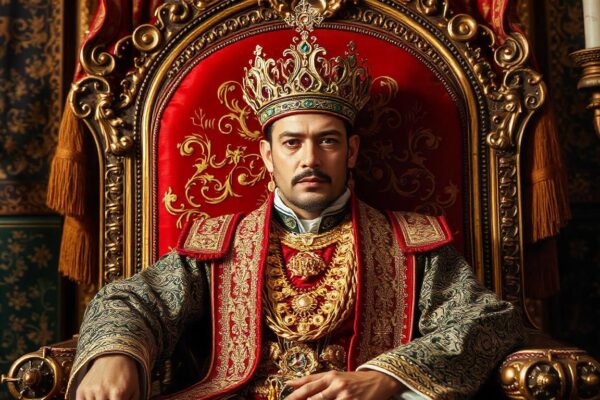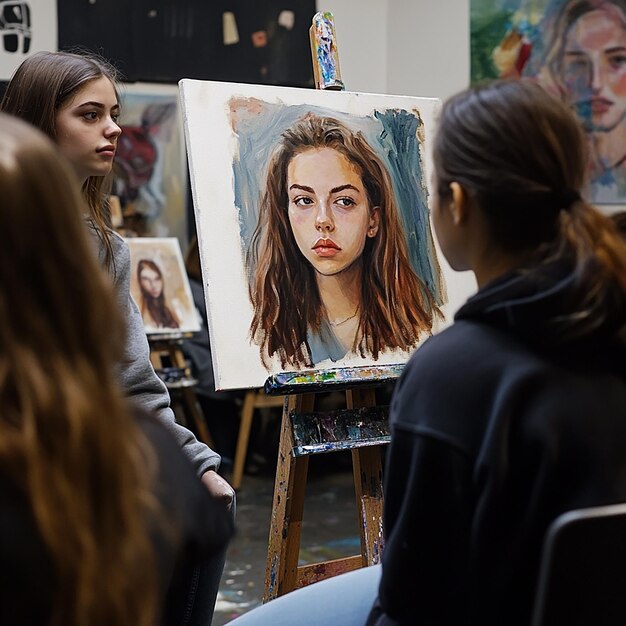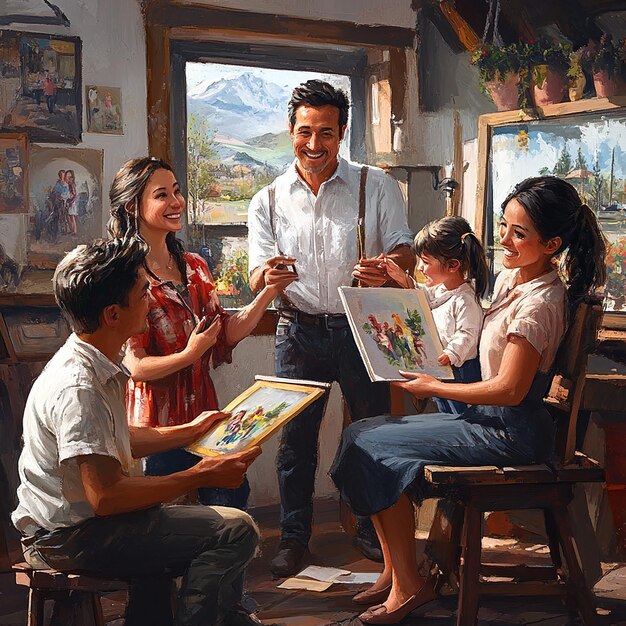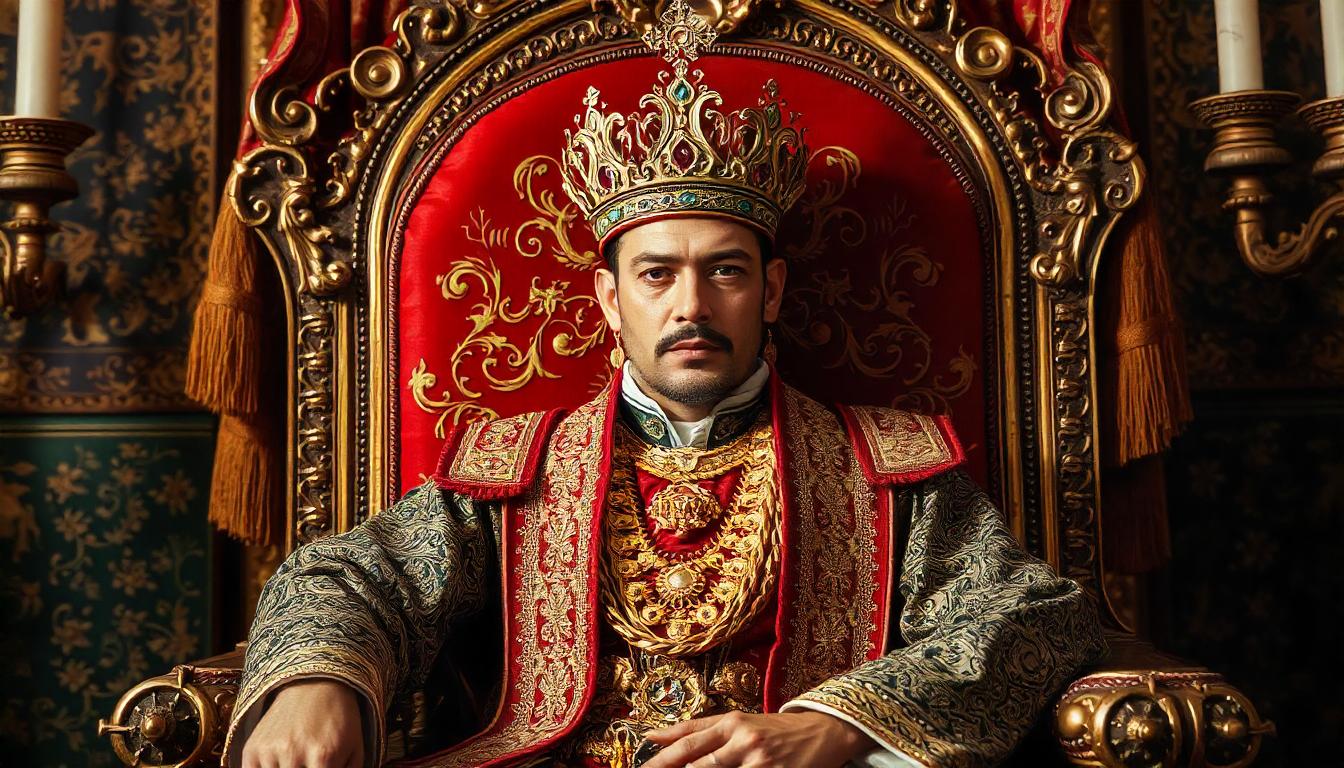Art is more than just an aesthetic pursuit; it’s a medium through which we can explore deep truths about ourselves, society, and the world around us. Whether through painting, sculpture, literature, music, or dance, art has always had a unique ability to communicate emotions, challenge perceptions, and inspire new ways of thinking. In this article, we’ll dive into the profound lessons we can learn from art and how it shapes our understanding, creativity, and even our character.
The Power of Art
Lessons from Art has existed as long as humans have, serving as a universal language that transcends borders, cultures, and time. From prehistoric cave paintings to contemporary digital art, it has continuously evolved but has always played an essential role in human expression. The beauty of art is its subjectivity; it teaches us to look beyond the surface and to find meaning, no matter how abstract or complex. Art is not just something we observe; it’s something we experience. Let’s explore the various life lessons art can teach us.
Understanding Perspective: Seeing the World Differently
Art encourages us to step outside of our comfort zones and view the world from different perspectives. When we encounter a work of art, we are invited to see the world through the artist’s eyes. This ability to adopt another viewpoint is essential for building empathy.
- Learning to see through someone else’s lens: Whether it’s a portrait capturing a specific emotion or an abstract piece evoking confusion or wonder, art challenges us to see beyond our personal experiences.
- Visual storytelling: A single image can tell a story that words cannot, making us more open to understanding different life experiences, cultures, and emotions.
Fostering Creativity and Innovation
Art is synonymous with creativity, and through it, we learn that there is no single “correct” way to solve a problem or express an idea. In a world that often values logical thinking and rigid structures, art reminds us of the importance of creative thinking.
- Stimulating the imagination: Artistic processes encourage out-of-the-box thinking. For example, abstract art asks viewers to connect dots in ways that challenge their usual thinking patterns.
- Creative problem-solving: Many artists, from painters to digital creators, must navigate technical limitations and personal challenges to bring their visions to life. This process fosters resilience and innovative thinking, which can be applied in many aspects of life and work.
Developing Emotional Intelligence
Art has the unique power to evoke and express emotions that we may not be able to verbalize. It helps us confront, process, and make sense of our feelings, teaching us important lessons about emotional intelligence.
- Emotional expression: Whether creating or observing art, emotions often flow freely, allowing us to engage with our innermost thoughts and feelings. A powerful painting can evoke feelings of joy, sadness, anger, or nostalgia, often touching on parts of ourselves we had not previously explored.
- Building empathy: Through art, we can better understand other people’s experiences. For example, an artist portraying grief, fear, or hope invites us into their emotional world, broadening our own emotional capacity.
Cultural Awareness and Appreciation
Art is a window into the diversity of human experience. Every culture has its own artistic traditions, and through exploring these, we gain a deeper understanding of the world’s cultural richness.
- Learning about history through art: Many art forms serve as historical records, providing insights into the lives, beliefs, and customs of people from different eras. From ancient cave paintings to Renaissance masterpieces, art helps us learn about the evolution of societies.
- Appreciation for cultural diversity: Exposure to different artistic styles, from African tribal masks to Japanese calligraphy, fosters a greater appreciation for cultural differences. Art reminds us that every culture has its own story to tell, and each is worthy of respect and recognition.
Building Critical Thinking Skills
Art isn’t just about pretty pictures or sculptures. It challenges us to look deeper and think critically. When we view a piece of art, especially more complex or abstract works, we are pushed to ask questions and seek out answers for ourselves.
- Analyzing and interpreting art: One of the great joys of art is that it’s open to interpretation. There is rarely a single “right” answer when it comes to deciphering its meaning, and that’s the point. This practice encourages us to question our assumptions and develop deeper critical thinking skills.
- Open-ended learning: Art doesn’t force conclusions on us. Instead, it prompts us to explore a multitude of possibilities, stimulating intellectual curiosity and encouraging lifelong learning.
Lessons in Patience and Perseverance
The creative process behind art often requires patience and a willingness to embrace failure. Most artists will tell you that the path to a finished product is filled with mistakes, revisions, and struggles, and it’s in this process where valuable life lessons lie.
- Resilience in the face of failure: Every stroke of the brush or musical note is a learning experience. Artists are familiar with trial and error, knowing that each attempt is a step closer to achieving their vision.
- Long-term focus: Creating something meaningful takes time, dedication, and a lot of hard work. Lessons from Art has existed as long as humans have, serving as a universal language that transcends borders, cultures, and time. teaches us that persistence pays off and that the journey toward completion is just as important as the end result.
Encouraging Self-Expression and Identity
Art provides an outlet for personal self-expression, allowing individuals to explore their identity in ways that words alone cannot. Through creating or engaging with art, people can explore their beliefs, values, and individuality.
- Finding your voice: Whether you’re painting, dancing, or writing poetry, art allows for a personal exploration of who you are. This can be especially important for marginalized groups who may not feel represented in mainstream culture.
- Forming connections through art: Art is not only a personal expression but also a bridge to others. When we share our art, we share a part of ourselves with the world, often fostering connections with those who resonate with our work.
Learning the Value of Aesthetics
Beyond practicality, art teaches us to appreciate the beauty of the world around us. Aesthetics plays a vital role in how we experience life, reminding us to slow down and take in the beauty, no matter how small or seemingly insignificant.
- The joy of beauty: Whether it’s the symmetry of a painting, the harmony of a song, or the elegance of a sculpture, art invites us to pause and appreciate beauty for its own sake.
- Mindfulness and observation: Engaging with art can help cultivate mindfulness, encouraging us to observe details and appreciate the present moment.
Inspiring Social Change
Throughout history, art has been a powerful catalyst for social change. Artists often use their platforms to challenge societal norms, raise awareness of injustices, and inspire activism.
- Art as activism: Many movements for social justice have been driven or influenced by art, from posters and murals to songs and performance pieces. Artists help to bring visibility to causes and can move people to action in ways that other forms of communication might not.
- Challenging norms: Artists often push boundaries and question the status quo, encouraging us to think critically about the world we live in. Whether it’s questioning political systems or promoting environmental awareness, art sparks necessary conversations.
Conclusion
Art, in all its forms, offers a wide range of lessons. It teaches us to see the world from different perspectives, encourages creativity, fosters emotional intelligence, and promotes cultural appreciation. It also develops our critical thinking, patience, and perseverance, while allowing us to express ourselves freely. The Lessons from Art has existed as long as humans have, serving as a universal language that transcends borders, cultures, and time. learned from engaging with art are invaluable and apply to nearly every facet of life. Whether you’re an artist or an observer, art enriches your understanding of the world, your emotions, and your connection with others.
FAQs
1. Why is art important in personal development?
Art helps in personal development by fostering creativity, encouraging self-expression, and promoting emotional intelligence. It challenges us to think critically, explore our identities, and appreciate the beauty around us.
2. How does art teach empathy?
Art allows us to step into the shoes of others by providing a visual or emotional representation of experiences different from our own. It helps us understand feelings and perspectives that might otherwise be unfamiliar.
3. Can engaging with art improve critical thinking skills?
Yes, analyzing and interpreting art encourages critical thinking by prompting us to ask questions, explore multiple interpretations, and consider different viewpoints.
4. How does art influence cultural awareness?
Art reflects the values, beliefs, and traditions of different cultures, offering insights into their histories and experiences. By engaging with diverse art forms, we gain a deeper understanding and appreciation for other cultures.
5. What role does art play in social change?
Art has historically been a powerful tool for activism and social commentary. It raises awareness, challenges norms, and inspires people to act on issues of injustice or inequality.
















